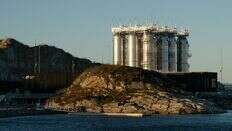- Phase 1 stores 1.5 mtpa CO2, fully booked.
- Phase 2 will increase capacity to 5 mtpa, supported by CEF Energy grant.
- CO2 transported from Brevik via 100-km pipeline to North Sea reservoir.
- Equinor, Shell, and TotalEnergies own Northern Lights JV.

CO2 Storage Milestone
The Northern Lights project has successfully injected and stored its first CO2 volumes 2,600 meters beneath the seabed. This marks the operation of the world's first third-party CO2 transport and storage facility, aimed at reducing European greenhouse gas emissions.
Transport and Injection Process
CO2 is transported from a cement factory in Brevik via ships, then offloaded and moved through a 100-kilometer pipeline to the Aurora reservoir under the North Sea. This process demonstrates the feasibility of carbon capture, transport, and storage as a scalable industry.
Phase 1 and Expansion Plans
Phase 1 of the project, with a capacity of 1.5 million tonnes of CO2 per year, is now complete and fully booked. The final investment decision for Phase 2 has been made, which will increase the capacity to a minimum of 5 million tonnes per year. This expansion is supported by a grant from the Connecting Europe Facility for Energy (CEF Energy) funding scheme.
Infrastructure and Future Goals
The expansion includes additional onshore storage tanks, a new jetty, and more injection wells. Equinor, as the Technical Service Provider, is overseeing the development, with nine new CO2 storage tanks delivered to the Øygarden site. Equinor aims to achieve 30-50 million tonnes per annum of CO2 transport and storage capacity by 2035, working on several CCS projects in Europe and the US.

